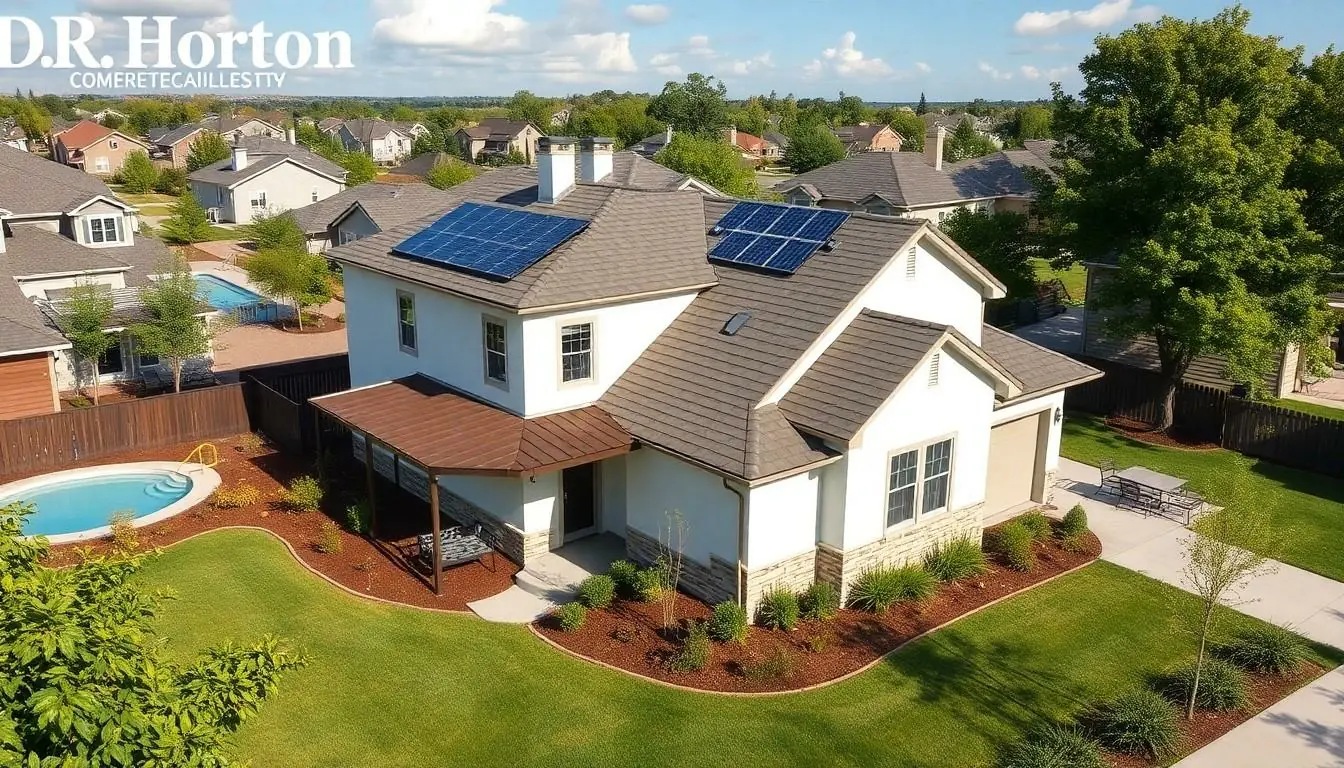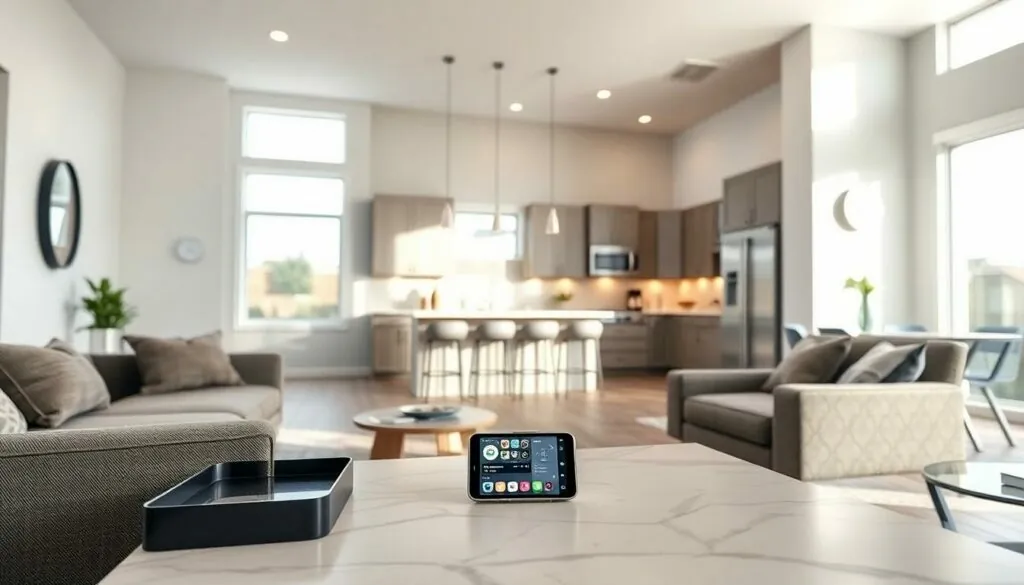Imagine living in a home that practically thinks for you. With D.R. Horton’s smart homes, you can control your lights, thermostat, and even your coffee maker—all from your smartphone. But before you dive headfirst into this tech-savvy lifestyle, it’s important to consider the monthly costs that come with it. Spoiler alert: it’s not just about the cool gadgets; it’s about making smart financial choices too.
Understanding the monthly expenses associated with a D.R. Horton smart home can help you avoid any surprises that might make your wallet weep. From utility bills to subscription services, knowing what to expect can turn your smart home dreams into a reality without breaking the bank. So, let’s unpack the numbers and see if the smart home life is worth the investment.
Table of Contents
ToggleOverview of Dr Horton Smart Homes
D.R. Horton smart homes incorporate advanced technology to enhance living experiences. Homeowners control lighting, security systems, and temperatures directly from their smartphones. These features contribute to greater comfort and convenience through automated settings. Energy efficiency plays a key role in the design of smart homes, often resulting in lower utility bills.
Smart technology includes options like smart thermostats, which learn preferences and adjust heating and cooling accordingly. Security cameras provide peace of mind, allowing homeowners to monitor their properties remotely. Automated lighting systems communicate with sensors to optimize energy usage throughout the day.
Monthly costs associated with D.R. Horton smart homes vary. Utility bills typically decrease due to energy-efficient appliances and systems. Subscription services for home automation platforms may incur additional expenses, depending on personal preferences and usage.
Homeowners should anticipate initial investment costs associated with smart home upgrades. Many features come included in the purchase of the home, while others may require separate purchases or subscriptions for full functionality. Understanding these costs enables informed decisions regarding smart home enhancements.
Exploring financial implications remains essential. Prospective buyers evaluate if investing in smart technology aligns with their budget and lifestyle. Overall, D.R. Horton smart homes offer modern conveniences that appeal to tech-savvy individuals and families.
Factors Influencing Monthly Costs

Understanding various factors that affect monthly costs is essential for homeowners in D.R. Horton smart homes. These elements determine the overall financial commitment associated with smart living.
Home Size and Features
Home size significantly impacts monthly costs. Larger homes usually incur higher utility expenses due to increased energy consumption. Smart home features, such as advanced security systems or multiple smart appliances, require additional subscription fees and increase initial setup costs. Energy-efficient appliances, part of many D.R. Horton homes, help mitigate these costs by reducing overall energy usage. Customization options might also play a role; unique upgrades often lead to variable costs each month.
Location and Community Amenities
Location influences utility rates and service fees. D.R. Horton communities often provide access to amenities that enhance quality of life but may also lead to higher monthly expenses. Proximity to urban centers usually results in increased costs for services and utilities. Communities equipped with smart technology offer added convenience, though they often come with monthly fees for maintenance and upkeep. Overall, certain community features, like recreational facilities, might affect homeowners’ budgeting considerations.
Typical Monthly Cost Breakdown
Understanding the monthly costs associated with D.R. Horton smart homes helps homeowners manage their budgets effectively. Several factors contribute to these costs, including mortgage payments and utility expenses.
Mortgage Payments
Owning a D.R. Horton smart home involves standard mortgage payments determined by the purchase price, down payment, and interest rates. Monthly payments vary significantly based on mortgage terms and financial institutions. Homeowners should consider property taxes and homeowner’s insurance as additional regular expenses. Those who choose to finance smart home upgrades might face higher monthly repayments if the cost is included in the mortgage. Calculating estimated payments using a mortgage calculator provides a clearer picture of total housing costs.
Utilities and Maintenance
Utility bills in smart homes often reflect energy-efficient appliances designed to lower consumption. Homeowners should expect additional costs for internet and subscription services to manage smart technology seamlessly. Monthly energy expenses may vary based on the home size, climate, and usage patterns. Routine maintenance also plays a role in overall budgeting, so it’s essential to allocate funds for periodic upkeep of smart systems. Many homeowners find that investing in advanced technology leads to long-term savings, despite slight increases in utility fees at the outset.
Comparisons to Traditional Homes
D.R. Horton smart homes offer unique features that set them apart from traditional homes. Advanced technology allows homeowners to control many aspects of their living environment. Energy-efficient appliances often lead to lower utility bills, a key difference from conventional homes where energy consumption can be higher.
Automated systems provide convenience that traditional homes typically lack. Smart thermostats adjust temperatures based on user preferences, enhancing comfort and efficiency. In contrast, homes that require manual monitoring often result in wasted energy and higher costs.
Initial costs for smart home upgrades may be higher than those for traditional homes, yet the long-term savings from reduced utility bills often justify the investment. Advanced security systems also require subscription fees, which can be an added expense compared to basic, non-smart security measures.
While D.R. Horton smart homes benefit from enhanced living experiences, traditional homes may not offer the same control or efficiency. Property location influences costs significantly as urban areas often mean higher utility rates. Additionally, the size of a smart home can lead to increased costs similarly found in larger traditional homes.
Homeowners must consider monthly expenses that occur in both types of homes. Mortgage payments and property taxes apply to both smart and traditional homes, yet smart home financing could impact payment amounts. Overall maintenance for smart systems is essential and can introduce new costs compared to more straightforward maintenance needs in traditional residences.
D.R. Horton communities bring amenities that enhance quality of life, an aspect sometimes lacking in traditional settings. Communities may charge fees that can accumulate monthly, contributing to higher overall expenses. By comparing these factors, homeowners can make informed decisions, ensuring that smart home investments align with their financial goals and lifestyles.
Benefits of Dr Horton Smart Homes
D.R. Horton smart homes offer numerous advantages that enhance the living experience. Enhanced comfort often stands out as one of the primary benefits. Homeowners can effortlessly control lighting, temperature, and security systems through smartphone applications, adapting environments to personal preferences.
Energy efficiency contributes significantly to reduced utility bills. Smart appliances optimize energy consumption, leading to potential savings when compared to traditional home systems. Increased security also remains a key feature. Advanced surveillance systems allow for real-time monitoring, providing homeowners with peace of mind.
Convenience plays a crucial role in smart home living. Home automation enables homeowners to create schedules, remotely manage home functions, and receive alerts. Many appreciate that smart technologies can learn preferences over time, making automation more intuitive.
Community aspects in D.R. Horton developments also enhance benefits. Many communities include amenities that foster interaction and improve quality of life, such as parks and community centers. Those living in D.R. Horton smart homes can enjoy these shared spaces along with their advanced home features.
Cost considerations extend beyond initial investments. Long-term financial benefits become apparent as homeowners often recover upgrade costs through energy savings. Diverse smart features, when combined with community utilities, create a well-rounded living experience for families and individuals alike.
Smart technologies continue evolving, ensuring that D.R. Horton homeowners stay at the forefront of innovation. Enhanced lifestyle options and improved home management reflect the ongoing commitment to adopting modern conveniences.
Understanding the monthly costs of living in a D.R. Horton smart home is essential for homeowners. While smart technology offers numerous benefits like enhanced comfort and energy efficiency, it’s crucial to factor in all associated expenses. From mortgage payments to utility bills and maintenance costs, each element plays a role in the overall financial picture.
Investing in smart home upgrades can lead to long-term savings, but initial costs and ongoing subscription fees should be carefully considered. By weighing these factors, homeowners can make informed decisions that align with their budget and lifestyle. Ultimately, embracing smart home technology can enhance daily living while potentially reducing overall expenses.






